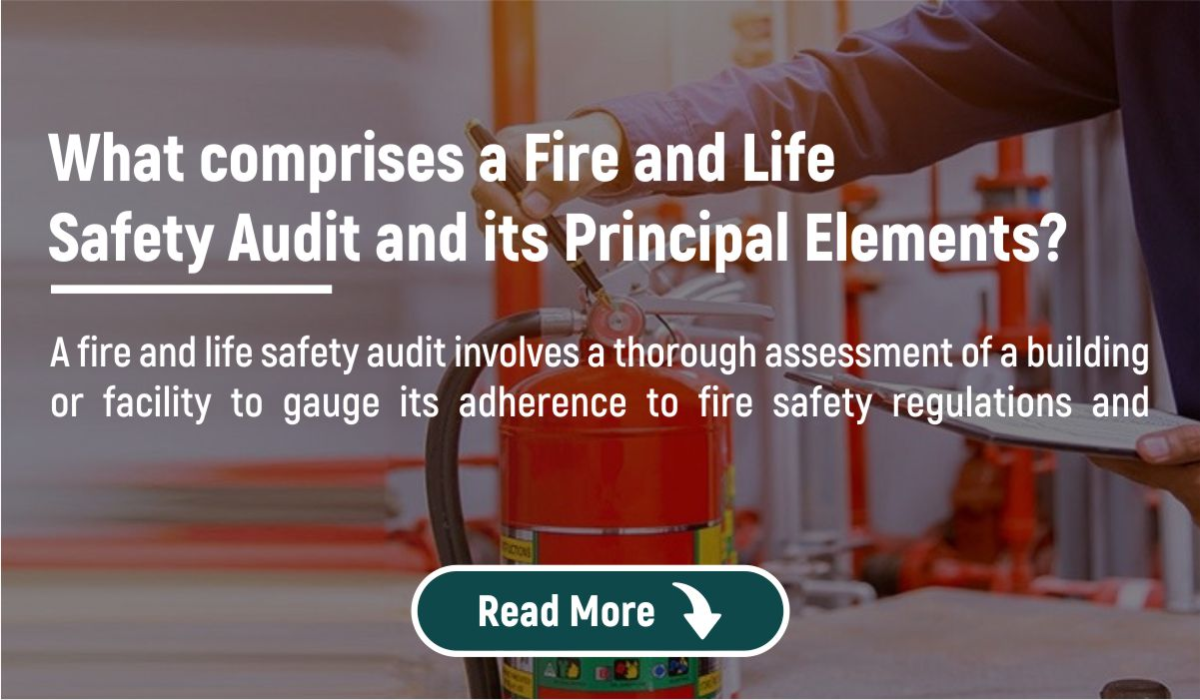
What comprises a Fire and Life Safety Audit and its Principal Elements?
What constitutes a Fire and Life Safety Audit and its Core Components?
A fire and life safety audit involves a thorough assessment of a building or facility to gauge its adherence to fire safety regulations and standards. Its primary objective is to pinpoint potential fire hazards, gauge the effectiveness of existing fire safety measures, and guarantee the presence of proper protocols for safeguarding lives and property during fire emergencies. These audits, typically conducted by qualified professionals, cover various aspects related to fire prevention, readiness, and response.
Essential Elements of a Fire and Life Safety Audit:
1. Building and Facility Examination:
Analyzing the structural integrity and fire resistance of the building, including materials used in construction.
Inspecting fire exits, evacuation routes, and the overall layout to ensure smooth egress.
2. Evaluation of Fire Protection Systems:
Assessing the functionality and upkeep of fire detection and alarm systems.
Inspecting fire suppression systems like sprinklers and extinguishers to ensure they're operational.
3. Inspection of Electrical Systems and Equipment:
Identifying potential fire hazards in electrical systems, such as faulty wiring or overloaded circuits.
Checking the condition of electrical equipment and appliances for proper functioning.
4. Reviewing Emergency Protocols:
Assessing emergency response plans, including fire evacuation strategies and designated assembly points. Evaluating employee training programs related to fire safety and emergency response.
5. Documentation and Record Examination:
Reviewing records pertaining to fire safety measures, equipment maintenance, and past fire drills. Ensuring permits and certifications are current and up-to-date.
6. Compliance with Occupancy Load and Codes:
Verifying compliance with occupancy load limits and local building codes. Assessing adherence to fire safety regulations.
7. Identification of Fire Hazards:
Documenting potential fire hazards like improper storage of flammable materials or blocked exits.
8. Communication and Notification Systems Assessment:
Evaluating communication systems for notifying occupants of fire incidents and coordinating with emergency services.
9. Recommendations and Corrective Actions:
Offering suggestions for addressing identified gaps and enhancing overall fire safety.
Developing an action plan for implementing necessary corrective measures.
Fire and life safety audits are crucial for upholding a secure environment within buildings and facilities. Regular audits aid businesses and property owners in adhering to regulations, reducing fire incident risks, and bolstering overall safety and welfare of occupants.
Fire & Life Safety Audit @ SAFEEL
SAFEEL provides state-of-the-art Fire and Life Safety Audit services across various industrial sectors nationwide. With a dedication to excellence and safety, we bring forth our expertise, ensuring businesses and organizations are equipped with top-tier fire safety standards.
